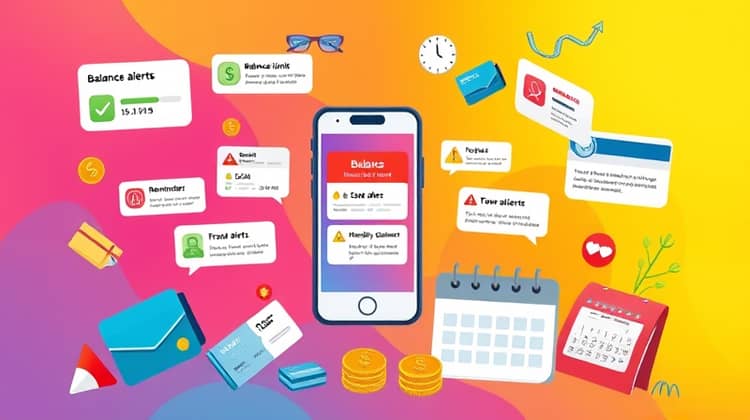In today's fast-paced world, managing your finances effectively is more crucial than ever. Credit cards, while immensely convenient, can lead to unintentional overspending and high debt if not monitored properly. One effective tool for preventing this is credit card balance alerts, which can help you stay informed about your spending habits and balances.
These alerts serve as timely notifications from credit card issuers that keep consumers updated on their current credit card balances. By receiving real-time updates, cardholders can make informed decisions about their ongoing financial activities. In essence, these alerts can be a vital part of a personal finance strategy.
Whether you're trying to stick to a budget, keep track of your spending, or avoid missing payments, balance alerts help maintain control over your financial life. In this article, we will explore how credit card balance alerts work, their importance, the different types available, and how to set them up for maximum effectiveness.
How Credit Card Balance Alerts Work

Credit card balance alerts function by sending notifications to cardholders whenever their balance reaches a specified threshold. These thresholds can be set by the user, allowing for personalized management of their credit card spending. For example, a user may choose to receive an alert when their balance exceeds $100, making it easier to track and manage expenses.
The process of setting up these alerts usually takes place through the credit card issuer’s mobile app or website. Users can often select how they want to receive these notifications—whether via email, text message, or in-app notifications. The chosen method ensures that the cardholder stays informed regardless of where they are.
Once set up, these alerts automatically trigger as soon as the cardholder reaches the pre-defined balance, prompting timely decisions on spending and potential payments. This proactive approach helps prevent excessive debt accumulation and maintains a healthy credit utilization ratio.
- Identify your threshold balance
- Sign into your credit card account
- Navigate to the alert settings
- Choose your notification method (email, text, etc.)
- Set your desired balance limit
- Save your settings
Why Balance Alerts Are Important

The significance of balance alerts can’t be overstated in the realm of personal finance management. Credit cards are a part of modern-day life, providing convenience and rewarding benefits; however, they also come with the risk of accruing debt if not monitored effectively. By using balance alerts, cardholders are empowered to keep their spending in check and avoid potential financial pitfalls.
Moreover, balance alerts help enhance financial awareness. Users become aware of their spending patterns, enabling them to make adjustments when necessary. This increased awareness can lead to better budget management and more responsible credit card use.
- Prevent overspending
- Avoid late fees
- Maintain a healthy credit utilization ratio
- Track spending habits
- Stay informed about financial health
Implementing balance alerts is a straightforward yet powerful way to ensure that you remain in control of your credit cards, making it much easier to manage your financial health.
Types of Balance Alerts

Balance alerts come in various forms, catering to different needs of cardholders. Understanding these types can help users choose the best option that aligns with their financial management strategy. Whether you want notifications for a specific balance or reminders for payment due dates, there's an alert for that.
Common types of balance alerts include notifications for reaching a set balance limit or alerts for when your payment is due. These tools are designed to mitigate the risk of overspending or missing payments, ensuring a more seamless financial experience.
- Balance limit alerts
- Payment due alerts
- Low balance alerts
- Fraud alerts
- Monthly statement alerts
How to Set Up Balance Alerts

Setting up balance alerts is a simple process that enhances your financial awareness and control. Most credit card issuers provide user-friendly interfaces to configure alerts according to personal preferences.
- Log into your credit card account
- Find the 'Alerts' or 'Notifications' section
- Select the type of alert you want to receive
- Set your balance threshold
- Choose your preferred notification method (email/text)
- Save your changes
By following these steps, you can ensure you receive timely updates on your credit card balance, allowing you to make informed spending decisions and maintain control over your finances.
Conclusion

In conclusion, credit card balance alerts are a vital feature for anyone looking to manage their finances effectively. They offer a simple yet powerful way to maintain awareness of your spending habits, avoid unnecessary debt, and ensure timely payments. By taking advantage of these alerts, cardholders can foster healthier financial behaviors and ultimately achieve their financial goals.














